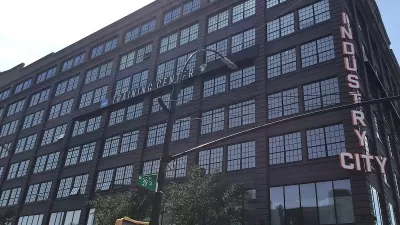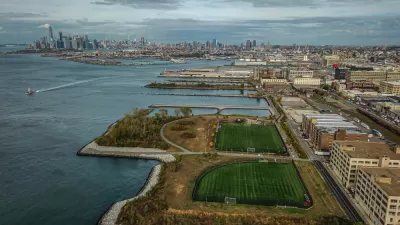Neighborhood rezonings that disproportionately displace minority residents could violate the Fair Housing Act, advocates say.

With five New York neighborhood rezonings complete in Mayor Bill de Blasio's Housing New York Plan, advocates are pressing the city to add a racial impact component to its environmental review process before undertaking further land-use reforms. Not doing so could put the city in violation of the Fair Housing Act, they warn.
In Brooklyn Eagle, Chase Brush explains that the City Environmental Quality Review currently includes an analysis of a project's potential to cause "secondary" displacement by creating a "change in socioeconomic conditions." But its scope is limited to impacts on low-income tenants of small buildings in areas that are not already experiencing gentrification or displacement.
Advocates, including State Senator Julia Salazar and District Leader Tommy Torres, want the environmental review to require an explicit analysis of how rezonings and other actions could impact the racial and demographic composition of neighborhoods—particularly whether they would have a "disparate impact" on Black and brown residents. The push comes in part from the experience in Williamsburg, where displacement of minority residents "quickened noticeably" after the neighborhood was rezoned in 2005.
"In their experience, rezonings have the potential to accelerate speculation and development in a neighborhood, which can in turn lead to higher rents and increased levels of tenant harassment and evictions," Brush writes. "And those changes can be especially devastating in low income and minority areas, two features that characterize many of the neighborhoods de Blasio has targeted in his rezonings."
FULL STORY: Demands for racial impact studies grow amid de Blasio rezonings

Planetizen Federal Action Tracker
A weekly monitor of how Trump’s orders and actions are impacting planners and planning in America.

San Francisco's School District Spent $105M To Build Affordable Housing for Teachers — And That's Just the Beginning
SFUSD joins a growing list of school districts using their land holdings to address housing affordability challenges faced by their own employees.

The Tiny, Adorable $7,000 Car Turning Japan Onto EVs
The single seat Mibot charges from a regular plug as quickly as an iPad, and is about half the price of an average EV.

Seattle's Plan for Adopting Driverless Cars
Equity, safety, accessibility and affordability are front of mind as the city prepares for robotaxis and other autonomous vehicles.

As Trump Phases Out FEMA, Is It Time to Flee the Floodplains?
With less federal funding available for disaster relief efforts, the need to relocate at-risk communities is more urgent than ever.

With Protected Lanes, 460% More People Commute by Bike
For those needing more ammo, more data proving what we already knew is here.
Urban Design for Planners 1: Software Tools
This six-course series explores essential urban design concepts using open source software and equips planners with the tools they need to participate fully in the urban design process.
Planning for Universal Design
Learn the tools for implementing Universal Design in planning regulations.
Smith Gee Studio
City of Charlotte
City of Camden Redevelopment Agency
City of Astoria
Transportation Research & Education Center (TREC) at Portland State University
US High Speed Rail Association
City of Camden Redevelopment Agency
Municipality of Princeton (NJ)





























